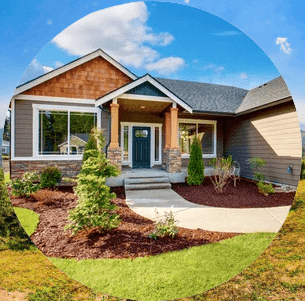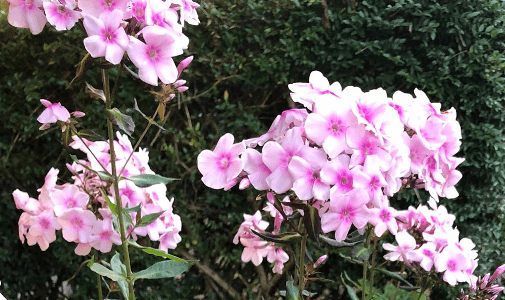Landscaping in Alabama can be a rewarding endeavor, but it’s important to consider the state’s climate and unique characteristics when planning and designing your landscape. Here are some key points to keep in mind for landscaping in Alabama:
Climate: Alabama has a humid subtropical climate, characterized by hot, humid summers and mild winters. It’s essential to choose plants and materials that can thrive in this climate.
Plant Selection: When selecting plants for your Alabama landscape, consider native and drought-resistant species. Some popular native plants include Southern Magnolia, Sweetbay Magnolia, Azaleas, and Dogwood trees. These plants are adapted to the local climate and require less water once established.
Soil Preparation: Alabama’s soils can vary significantly from region to region. Conduct a soil test to determine the pH and nutrient levels in your soil. Amending the soil with organic matter, such as compost, can improve its fertility and water-holding capacity.

Irrigation: Due to Alabama’s hot and dry summers, irrigation may be necessary, especially for newly planted landscapes. Consider installing an efficient irrigation system to ensure your plants receive adequate moisture.
Mulching: Applying mulch to your garden beds can help retain soil moisture, suppress weeds, and regulate soil temperature. Use organic mulch like pine straw, wood chips, or compost.
Lawn Care: If you have a lawn, choose warm-season grasses like Bermuda grass, Zoysia grass, or Centipede grass, as they are well-suited to Alabama’s climate. Proper mowing, watering, and fertilizing are essential for maintaining a healthy lawn.
Pest and Disease Management: Be vigilant for common pests and diseases that can affect Alabama landscapes. Regularly inspect your plants for signs of trouble and take appropriate action if needed.
Landscaping Features: Incorporate hardscape features like patios, walkways, and retaining walls into your landscape design. These elements can provide functional and aesthetic value to your outdoor space.
Local Regulations: Check with your local government or homeowner’s association for any regulations or guidelines regarding landscaping, especially if you plan to make significant changes to your property.
Maintenance: Regular maintenance is crucial to keep your Alabama landscape looking its best. This includes pruning, weeding, and periodic fertilization.
Remember that landscaping in Alabama can vary greatly depending on your location within the state. Coastal regions, for example, may have different climate considerations than areas in the northern part of the state.
Do you need a landscape license in Alabama?
In Alabama, the requirements for a landscape license can vary depending on the specific type of landscaping work you plan to undertake and your level of involvement in landscape design or installation. As of my last knowledge update in September 2021, here’s some general information regarding landscape licensing in Alabama:
- Landscape Architect License: If you plan to offer landscape architecture services, which involve designing and planning landscapes for public and private spaces, you will typically need to obtain a license as a Registered Landscape Architect (RLA). This typically requires a degree in landscape architecture from an accredited program and passing the Landscape Architect Registration Examination (LARE).
- Landscape Contractor License: If you plan to engage in landscape construction or installation work, such as planting, hardscape installation, irrigation system installation, and grading, you may need a Home Builders License or a General Contractors License, depending on the scope and value of your projects. The specific requirements can vary by local jurisdiction, so it’s important to check with your city or county government for any additional licensing or permitting requirements.
- Nursery and Plant Dealer License: If you intend to operate a nursery or sell plants, you may need a Nursery and Plant Dealer License, which is administered by the Alabama Department of Agriculture and Industries.
It’s important to note that licensing requirements and regulations can change over time, so I recommend contacting the appropriate local and state government agencies in Alabama, such as the Alabama Landscape Architects Board, the Alabama Licensing Board for General Contractors, or the Alabama Department of Agriculture and Industries, to get the most up-to-date and accurate information on licensing requirements for your specific landscaping activities. Additionally, consider consulting with a legal professional or a business advisor to ensure you comply with all necessary regulations and obtain any required licenses or permits.
What are the best plants for landscaping in Alabama?
Alabama’s climate, which features hot, humid summers and mild winters, makes it suitable for a wide variety of plants for landscaping. Here are some popular and well-suited plant options for landscaping in Alabama:

- Azaleas (Rhododendron spp.): Azaleas are renowned for their vibrant spring blooms and are a staple in Alabama gardens. They come in various colors and sizes, making them a versatile choice for landscaping.
- Crape Myrtle (Lagerstroemia indica): Crape myrtles are heat-tolerant, drought-resistant trees or shrubs that produce beautiful summer blossoms. They are available in a range of sizes and colors.
- Camellias (Camellia spp.): Camellias are prized for their lush, glossy foliage and elegant winter blooms. They thrive in the shade and come in various flower forms and colors.
- Japanese Maples (Acer palmatum): These small to medium-sized trees are valued for their colorful, finely textured foliage and graceful shape. They perform well in Alabama’s climate.
- Southern Magnolia (Magnolia grandiflora): The Southern magnolia is a classic evergreen tree with large, fragrant white flowers. It provides year-round greenery and adds a touch of Southern charm to landscapes.
- Daylilies (Hemerocallis spp.): Daylilies are reliable perennials that offer a profusion of colorful blooms throughout the summer. They are low-maintenance and come in many different varieties.
- Lantana (Lantana camara): Lantana is a heat-loving, drought-tolerant plant that produces clusters of vibrant flowers. It’s an excellent choice for attracting butterflies to your garden.
- Indian Hawthorn (Rhaphiolepis indica): Indian hawthorn is a versatile shrub with attractive evergreen foliage and clusters of pink or white flowers. It’s well-suited for hedges and borders.
- Baptisia (Baptisia spp.): Baptisia, also known as false indigo, is a native perennial that features spikes of colorful pea-like flowers. It’s a great choice for adding structure and color to the garden.
- Hostas (Hosta spp.): Hostas are shade-loving perennials with attractive foliage in various shades of green, blue, and variegated patterns. They thrive in the shade and are excellent for border planting.
- Dwarf Palms (Sabal minor, Rhapidophyllum hystrix): Certain palm species like the Sabal minor and Rhapidophyllum hystrix are cold-hardy and suitable for landscaping in Alabama. They add a tropical touch to the garden.
- Native Plants: Consider incorporating native Alabama plants like the Alabama azalea (Rhododendron alabamense), Eastern redbud (Cercis canadensis), and the Alabama state wildflower, Coreopsis (Coreopsis spp.), to support local ecosystems and wildlife.
When planning your landscaping in Alabama, it’s important to consider factors such as soil type, sunlight exposure, and water availability to select plants that will thrive in your specific location. Additionally, proper soil preparation and regular maintenance are key to the success of your landscaping efforts. Consulting with a local nursery or landscaping professional can also provide valuable insights into plant selection and care.
How to calculate the cost of landscaping in Alabama?
Calculating the cost of landscaping in Alabama, or anywhere else, can vary widely depending on several factors, including the size of the project, the scope of work, the materials used, and the labor costs in your specific area. Here are the general steps you can follow to estimate the cost of landscaping in Alabama:
- Define Your Project Scope: Clearly define what you want to achieve with your landscaping project. Do you want to create a new garden, install a patio, or simply perform routine maintenance? The complexity and scale of your project will greatly affect the cost.
- Create a Detailed Plan: Work with a landscape designer or architect to create a detailed landscaping plan. This plan should include the layout, plant selection, hardscape elements (like walkways or patios), irrigation systems, and any other features you want to include.
- Obtain Multiple Quotes: Contact several landscaping companies or contractors in your area to request quotes for your project. Be sure to provide them with a copy of your landscaping plan so they can provide accurate estimates.
- Consider Material Costs: Landscaping costs can vary significantly based on the materials you choose. For example, the type of plants, trees, and shrubs, as well as the quality of paving stones or mulch, can all affect the overall cost.
- Factor in Labor Costs: Labor costs can also vary based on the complexity of the project, the expertise required, and the local labor market. Be sure to get labor cost estimates from the contractors you contact.
- Account for Additional Expenses: Don’t forget to factor in additional expenses such as permits, soil testing, excavation, and disposal of old landscaping materials if you’re renovating an existing landscape.
- Calculate Total Cost: Add up all the costs provided by the different contractors, including materials and labor. This will give you a rough estimate of the total cost of your landscaping project.
- Set a Budget: Based on your calculations, set a budget for your landscaping project. Make sure your budget aligns with your financial capabilities.
- Negotiate and Review Contracts: Once you’ve chosen a contractor, negotiate the terms and review the contract carefully. Ensure that all the details of the project, including costs, timelines, and any warranties, are clearly outlined in the contract.
- Keep Contingency Funds: It’s a good idea to have a contingency fund in case unexpected expenses arise during the project.
Remember that the cost of landscaping in Alabama can vary depending on the region within the state, so it’s important to get local quotes from reputable landscaping professionals to get the most accurate estimate for your specific project. How is landscaping done in Alabama? >>
